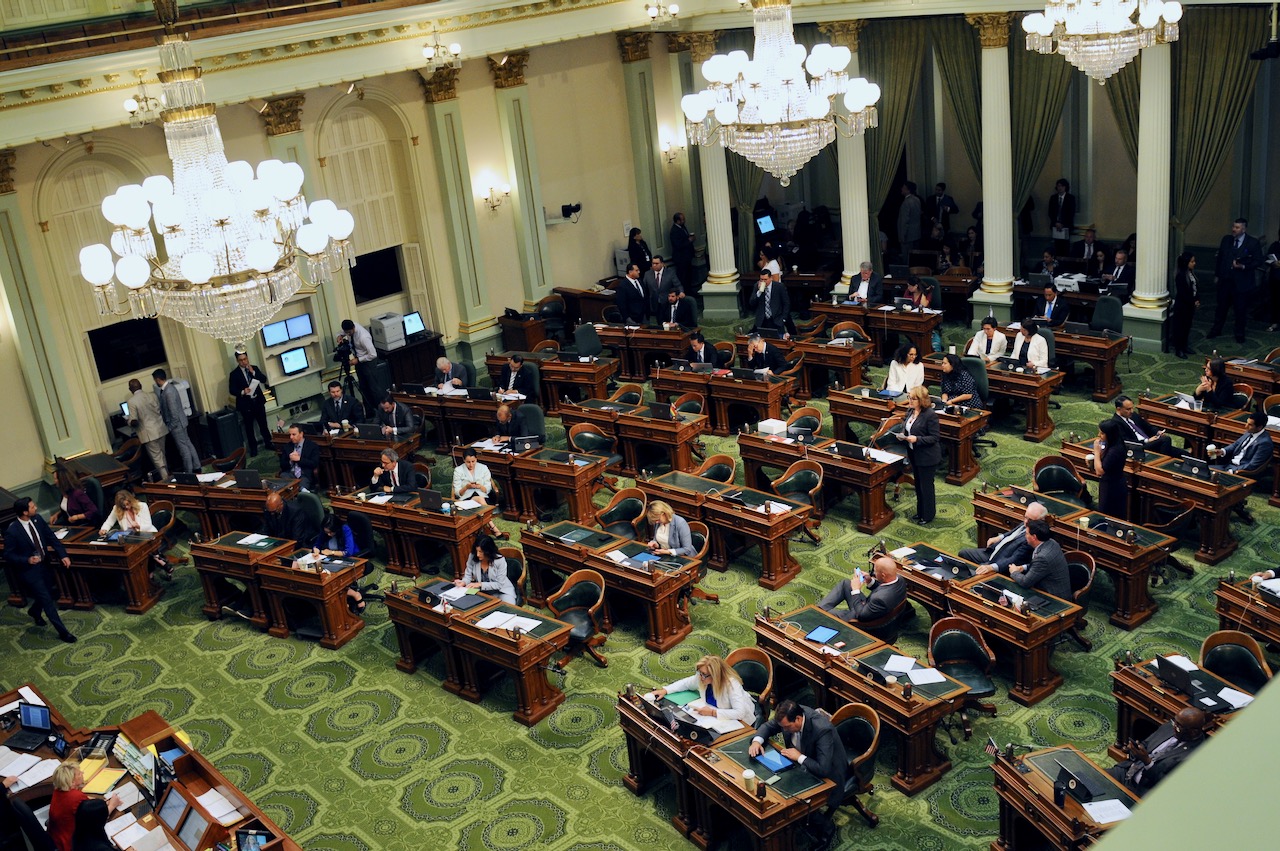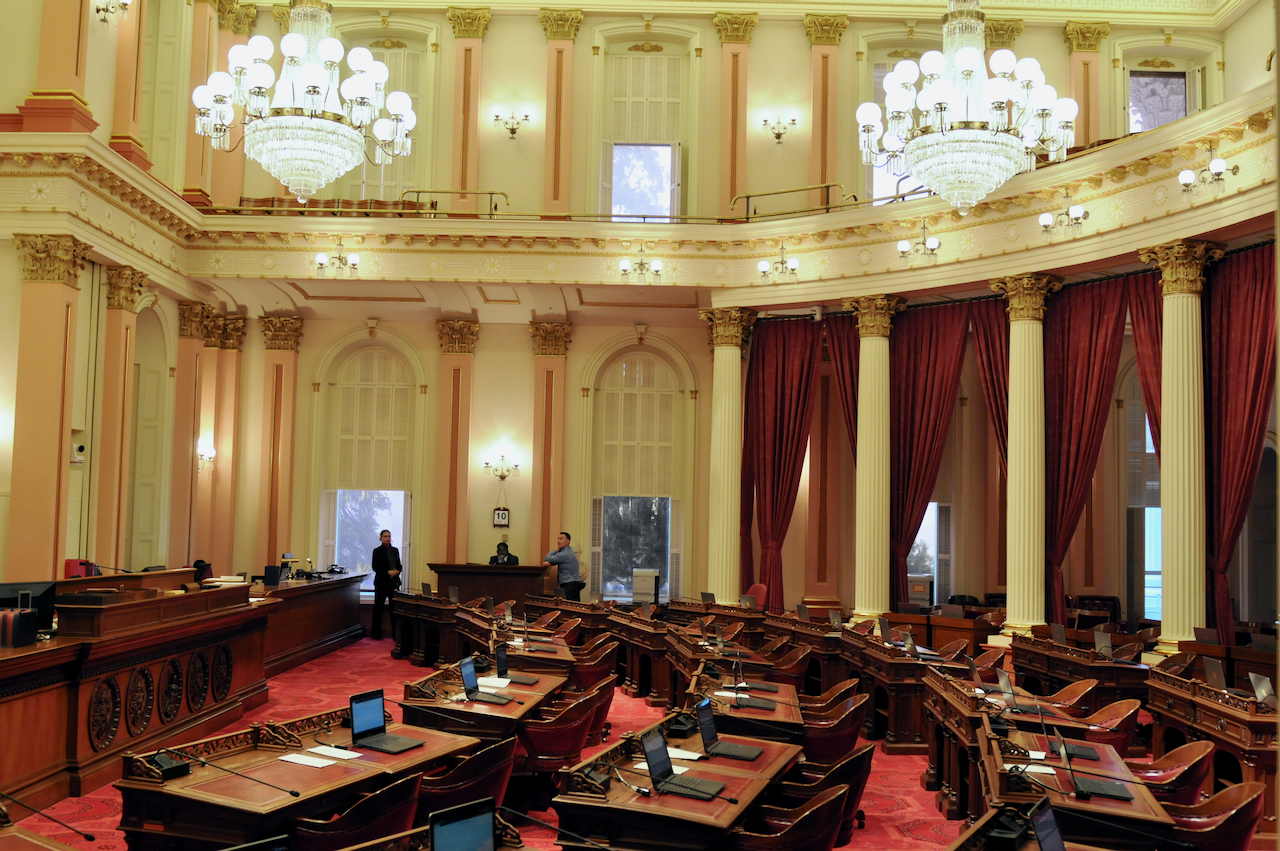
California State Capitol. (Photo: Kevin Sanders for California Globe)
Some Interesting Provisions in the Firearms Private Right of Action Bill
These subdivisions are an effort by the Legislature to try and limit how a court will view SB 1327
By Chris Micheli, July 26, 2022 6:28 am
In reviewing the bills acted upon so far this Session by Governor Newsom (about 150 bills as of July 25), there are some unique “plus” sections contained in the recently-enacted SB 1327 (Hertzberg), that would enact a private right of action against firearms manufacturers. The “plus” sections are provisions founds at the end of a bill that do not include statutory language.
The “plus” sections can include items such as an urgency clause, special statute, state-mandated local program, severability clause, etc. It can also include statements of legislative intent or other statutory interpretation guidelines. They are sections of the bill, but not sections of a Code.
SB 1327 includes three such provisions in Section 3 of the bill. The following is the language and brief commentary on the three subdivisions of Section 3:
(a) A statute that regulates or prohibits firearms shall not be construed to repeal any other statute that regulates or prohibits firearms, either wholly or partly, unless the later-enacted statute explicitly states that it is repealing the other statute.
Subdivision (a) specifies that a later-enacted statute must “explicitly state” that the later-enacted statute is repealing any other existing statute that regulates or prohibits firearms. In other words, the courts should not view SB 1327 or any other state statute to repeal any other existing statute unless SB 1327 or a later-enacted statute clearly states that it repeals an existing statute.
(b) A statute shall not be construed to restrict a political subdivision from regulating or prohibiting firearms in a manner that is at least as stringent as the laws of this state, unless the statute explicitly states that political subdivisions are prohibited from regulating or prohibiting firearms in the manner described by the statute.
Subdivision (b) specifies that a statute does not limit a city or county from either regulating or prohibiting firearms in a way that is as stringent as a state law unless the state law “explicitly statutes” that the city or county is prohibited from doing so. In other words, the courts should not view SB 1327 or any other state statute to preclude a city or county from regulating or prohibiting firearms unless the state law clearly state that it precludes a city or county from doing so.
(c) Every statute that regulates or prohibits firearms is severable in each of its applications to every person and circumstance. If any statute that regulates or prohibits firearms is found by any court to be unconstitutional, either on its face or as applied, then all applications of that statute that do not violate the United States Constitution and California Constitution shall be severed from the unconstitutional applications and shall remain enforceable, notwithstanding any other law, and the statute shall be interpreted as if containing language limiting the statute’s application to the persons, group of persons, or circumstances for which the statute’s application will not violate the United States Constitution and California Constitution.
Subdivision (c) specifies that all state laws that regulate or prohibit firearms are to be viewed as being separate and apart from other provisions of the same statute. As a result, if a court finds one provision of any statute regulating or prohibiting a firearm, then the one provision is no longer in effect, but the rest of the statute remains in place.
One question raised by this language is the meaning of “in each of its applications to every person and circumstance.” A normal severability clause does not contain that language. This language attempts to limit the range of the unconstitutionality and keep a provision in place except for the narrow application at issue in a court challenge.
All three of these subdivisions are an effort by the Legislature to try and limit how a court will view SB 1327 or a later-enacted statute. The courts can follow these statements and view them as limiting the courts’ discretionary review, or they can reject these statements and interpret SB 1327 or later-enacted statutes in their own view.
One interesting question raised by this language is whether state courts will accept any of these statements beyond a review of the language of SB 1327. In other words, while this language is only found in SB 1327, each subdivision references “a statute” or “every statute,” rather than “this statute,” which would normally limit the legislative statements to an interpretation of this bill (i.e., SB 1327). Will the courts actually follow any of these statements when the court review some other statute in the future?
- Enforcement of Judgments in California - December 13, 2025
- General Provisions Related to Family Law Support - December 13, 2025
- Petitions for Forming Harbor Districts in California - December 12, 2025




